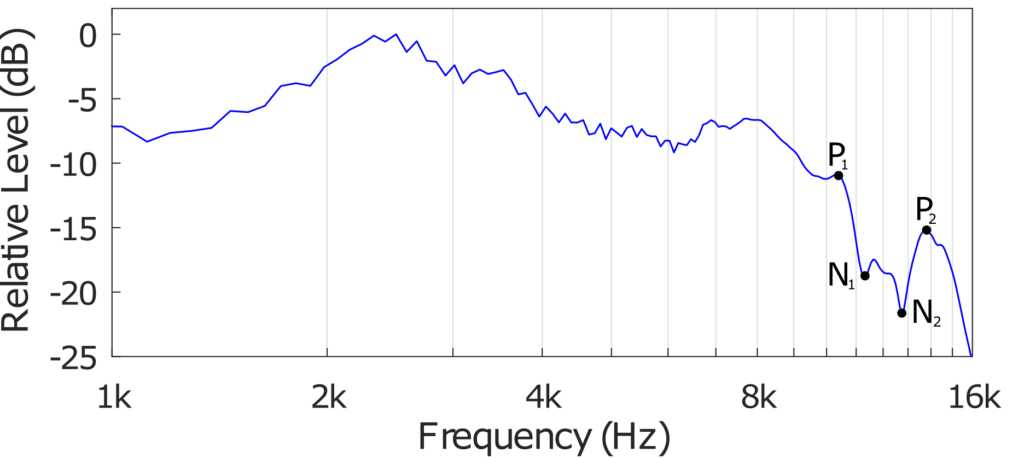Monaural cues are essential in vertical localization. These spectral cues cause notches and peaks in the head-related transfer function (HRTF), as seen in the figure below. The head and torso affect the spectra in the low-frequency range while the peaks and notches are observed over 5kHz. The sound waves reflect off the pinnae, resulting in constructive and deconstructive inference. The pinnae’s asymmetrical characteristics cause the notches to have angular dependence with respect to elevation. Peaks stay constant throughout all elevation angles.
From an anthropological view, the peaks are caused by resonances of various cavities within the pinnae. Peak P1 corresponds to the source direction and the depth of the concha, the cavity leading to the auditory canal. Other peaks are a result of resonances from external cavities; these peaks are analogous to the modes of a rectangular, rigid room with slightly different behavior due to non-enclosed volume with exposure to air.

It is still unclear about the relationship between notches and peaks in the auditory processing system. One theory postulates that the peaks serve as a reference for the auditory system. The ear does not capture an HRTF, but rather an auditory event in an ever-changing environment. The peaks angular-independence of vertical angle allows the auditory information to extract the vertical cues of the sound source from a comparison to the processed notches.
There are also unanswered questions about how the brain processes the spectral cues to localize the auditory event. An experiment was conducted using two sources at different locations. Subjects were presented with a dichotic sound image with differing vertical sound source angles for each ear. Results yielded that both sources were located when presented with the dichotic signal. The spectral cues of each ear were independently processed, allowing for dual localization; however, the processing order of the signals is still an undeveloped study.
More Information